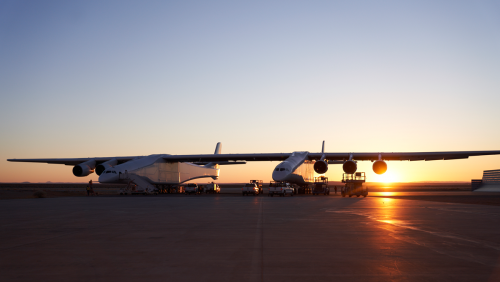Steelpillow
Your claim that up to ten percent of a cryogenic propellant is lost at time of burn out due to evaporation – Ref Text Book “Modern Engineering for Design of Liquid –Propellant Rocket Engines” by Dieter K Huzel, page 146 Para 5.3, quotes “Rate of oxidizer evaporation in the tank as 1.6lb/s” for a relatively large 4 engine powered LOX/RP1 stage. This is about four/five orders less than your claim so please can you provide a referable source to support your claim.
Every aircraft I’ve ever come across has had operating limits, e.g. crosswind limits, hot/high limits, contaminated surface limits, etc. So it makes no difference how good the weather is at the desired launch location, if the weather at airfield is outside of operating limits, the mission doesn’t get flown. I guess in theory you could say the planning could be more flexible but that’s making the assumption that airports are really going to accept a 0.1 - 0.2 kilo ton bomb siting on their main runway, which if it goes bang would be a single point failure for their entire revenue income. An airport with population living under the flight path I reckon will be an automatic exclusion.
Others and myself cannot understand how an air launch reduces the max flight g, in particularly considering the additional pitch up which inherently occurs after release. Maybe you could provide a referable source to support your claim which can explain it better.
Your claim that that automatic loading of cryogenic propellant in flight is “not rocket science”;- the USAF blew up seven ICBM’s (Titan 1 and Atlas) complete with their silo’s during operational propellant loading exercises. (Although according to Dieter’s data above, it’s unnecessary so not worth the risk)
Why these concepts get developed?
When it comes to developing technology cash is king. Just because an entrepreneur is mega wealthy doesn’t automatically mean they has a good understanding of even simple physic’s or will even listen to the advice of someone that does;- they’re notorious for going with their “gut” combined with a dogmatic, get on with it attitude. Once cash is being spent and loyal people are on the payrole, they become very vulnerable to the “Emperor’s New Clothes” situation. This has been responsible for a good number of spectacular white elephants in years gone by.
However enticing that the thought that a commercial airliner can achieve 10% of the altitude required for orbit, it’s an inescapable fact that it only has a tiny fraction of the required orbital energy. This is best illustrated by the orbital mass fraction of the vehicle at zero V, which is barely different for both methods.

